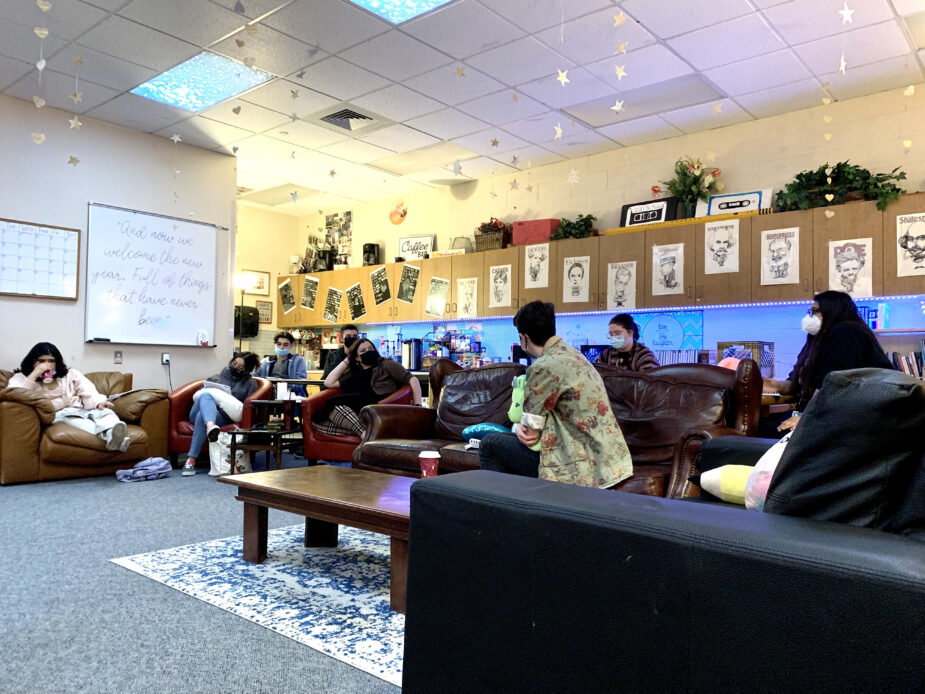Factors that Influence School-wide Change
As part of a year long partnership with the State of Idaho Rachel Fruin and Dean Shareski developed a resource that supports professional learning facilitators to more naturally embed the use of social and emotional learning, assessment, student engagement and blended learning into any professional learning offering. As part of that resource they visited some schools in Idaho doing some share worthy things in these areas. Students, teachers, and administrators were all engaging together in ways that made learning extend beyond classroom walls for the betterment of the whole school community. The interesting thing about these three schools is that they were working on very different initiatives and programs, but had the same empowering impact. Individually, each school could have pointed to their initiative as the path to addressing behavior challenges and increasing student performance. Because every initiative was uniquely different, there had to be other factors that made the initiative successful. Let’s highlight four common factors in implementing initiatives across these schools that led to positive school change. Here are the schools Rachel and Dean visited.
- Willow Creek Elementary, in Nampa School District, ID, has spent years building their blended learning program in order to personalize learning and support the needs of diverse learners. Learn more about blended learning at Willow Creek in this video.
- Jefferson Middle School, in Caldwell School District, ID, has done tremendous work around trauma-informed learning by first bringing mindfulness to staff. Jefferson principal Meghan Wonderlich and staff members share their journey in this video.
- Caldwell High School in Caldwell School District, ID, has been intentional about implementing student engagement strategies leading to benefits far beyond learning content. Caldwell HS coaches and teachers share their successes in this video.
Factor #1: Tradition Disrupting Initiative
Schools implement blended learning, SEL, and engagement strategies all of the time. Often these programs and strategies are researched and chosen by data-informed practices and their implementation has positive results. The three schools described took implementation to the next level by rethinking systems and structures including time and space. Their work was not an add-on to existing practices, but a completely new way of doing things.
Teachers and administrators collectively have to be willing to risk giving up what is familiar in order to pursue what they believe will be better. In talking with educators from each school listed above, they all shared discomfort in doing something completely new. Each school had an inflection point where educators became willing to go down an unfamiliar path. At Willow Creek the integration of technology into the classroom through 1:1 devices brought an opportunity to rethink personalized learning. Jefferson Middle School leaders were intentional about staff members experiencing the benefits of mindfulness on a personal level before bringing strategies into the classroom. For many staff members, learning about and practicing mindfulness was foreign to them and outside of their comfort zone. Once staff experienced the benefits for themselves, they were excited to create space in their classes for new practices that support student wellness. At Caldwell HS the challenges faced through remote learning during the pandemic have generated a new sense of purpose to engage students together in the classroom. Educators shared with me that you can’t rush staff buy-in, but it is worth spending the time up-front to make implementation successful.

Factor #2: Collaboration
Implementing new initiatives that disrupt traditional teaching cannot be done by a few educators in the building or team while the rest continue in the same, if the community wants to experience change. A whole grade level, content area, or school staff have to have collective buy-in and contribution to the initiative. Willow Creek involved all teachers and administrators in collaborative efforts to implement blended learning. Jefferson Middle School included all certified and non certified staff in learning about, practicing and implementing mindfulness. Finally, at Caldwell High School, teachers collaborated with each other and instructional coaches to improve student engagement.
Teachers described the benefit of having shared responsibility. They were all able to contribute their ideas, and see how their contributions serve the community. When there were challenges and hurdles, which are inevitable during innovation, collaboration was key to working through them. Not only does everyone have important ideas to contribute, but collaboration ensures that teachers keep going rather than reverting back to a previous way of doing things.

Factor #3: Data
Every school was intentional about using data to inform decisions and monitor progress. These initiatives weren’t implemented because they sounded or felt good. They were chosen with purpose for all students.
Willow Creek uses computer programs that generate student data reports about their personalized learning in an app. They also continuously monitor progress and group students accordingly. Jefferson Middle School is very intentional about using data to tell the story of the work they are doing around trauma-informed instruction. They collected data such as perception surveys, student behavior reports, and student assessments. The data demonstrates how mindfulness led to a shift in behavior referrals. Finally, teachers at Caldwell HS use formative assessment data to monitor student understanding, make decisions about what learning activities students are ready for, and group students.

Factor #4: Student Ownership
A fourth factor for success demonstrated at each school and grade-band is the belief that students can learn at the highest levels and take responsibility for their learning. In observing many classrooms at Willow Creek, there was small group instruction, individual work, and small group work all happening at the same time. Students had their playlists and knew what task they were responsible for completing. One teacher at Jefferson described how implementing mindfulness led him to realize that he wasn’t expecting enough of his students and he believed they could do more. He started giving his students harder tasks and they rose to the challenge meeting his high expectations. Teachers at Caldwell HS spoke of how their belief in students’ abilities fueled their design of engaging learning experiences so that they could learn at deep levels. High school teachers around the country have found that engaging students is particularly challenging after remote learning. Students are unmotivated, out of the school routine, and tied to their phones. Yet, Caldwell HS has found a way to engage students by designing learning experiences and environments with purpose that communicate a high expectation for what students will be able to accomplish. Students have responded with deeper engagement and understanding.

Despite schools working on a variety of initiatives, the factors of a tradition disrupting initiative, collaboration, data, and student ownership were clearly observed at each school. A fifth common factor observed at these schools is that change is hard. Educators have found success for their students when they anticipate and persevere through unexpected challenges. The journey these schools have gone on has not been easy, but it has been worthwhile. The benefits of these initiatives were demonstrated through data and in learning environments that were joyful, inviting, and empowering. We look forward to celebrating more schools who are engaging in necessary and challenging work to bring about positive change for their communities.


